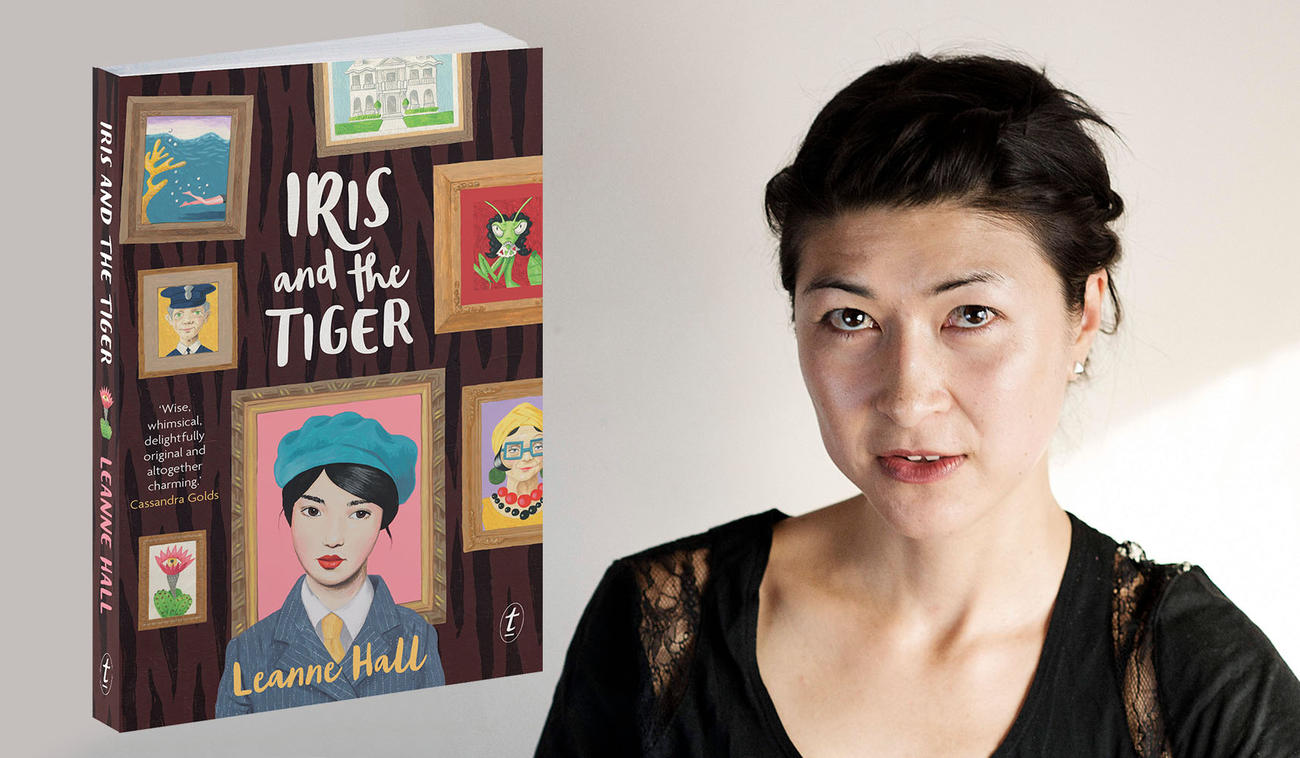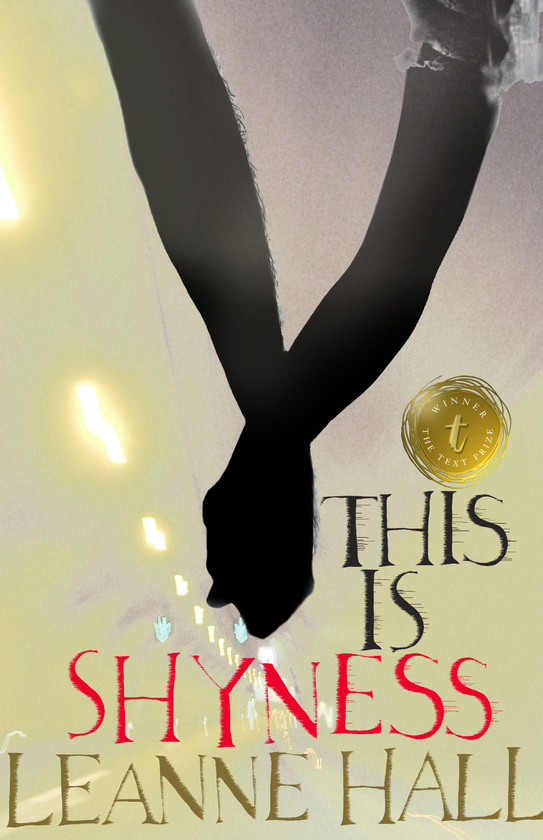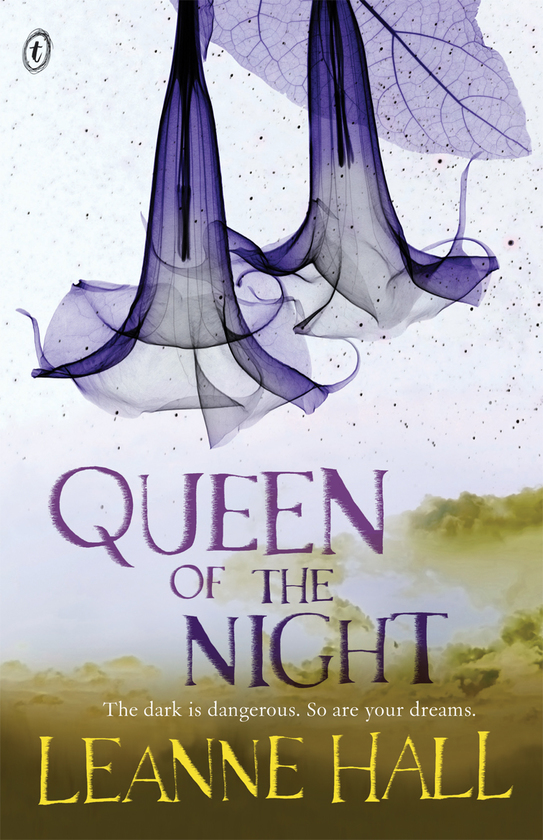
Alice Lewinsky has a chat with author Leanne Hall about her new book, Iris and the Tiger (out Wednesday 27 January).
With five-legged dogs and tennis-playing sunflowers, Iris and the Tiger is truly a brilliant work of imagination. Which books fed your imagination when you were younger?
I was an avid book nerd as a kid (not much has changed). I loved Danny the Champion of the World, the Faraway Tree series, Pippi Longstocking and The Iron Man. I also pinched my parents’ books when I ran out of things to read, and formed an early love of Charles Dickens and John Wyndham.
How has your work as a bookseller influenced your writing?
Well, lifting all those boxes and climbing all those ladders keeps me fit and healthy, and wards off computer bum! Working as a bookseller means I’m in direct contact with books—discussing them, recommending them, debating the various merits of book covers, seeing what’s in the market, and finding out what readers like and dislike. Most importantly, it keeps me reading new literature and being exposed to really great writing.
You’ve previously written novels for a young-adult audience. Did you set out to write a book for younger readers with Iris and the Tiger or did this happen naturally as the story developed?
After writing two YA books (This Is Shyness and Queen of the Night) I was ready for a change of pace. I knew I wanted to write about surrealist art, and I knew that if I wrote for teenagers I’d have to go the Sex & Death path into the subconscious. Instead, I chose to focus on magic and wonder, and write for a younger audience. I really wanted to explore that transitional time of leaving childhood for early adolescence. Iris called out to me, and she was sounding twelve and confused!
How is writing for younger readers different to writing for the YA readership? Did you find this transition challenging at all?
I didn’t find myself having to adjust or hold back in any way, and I didn’t find it too much of a transition. I remember two times in my youth more vividly than others: being twelve years old and being sixteen. They were both times when I was on the cusp of becoming a new person. I really enjoyed writing the friendship between Iris and Jordi, without having to worry about crushes and raised heart rates.
There is a wonderful blurring of the fantastic and the real in Iris and the Tiger. But, as Iris points out, when it comes to magic ‘balance is important’. Was it ever difficult to find a balance between the familiar and the absurd when writing the novel?
I included the line about balance because all the classic fantasy novels I love pay attention to the concept of maintaining a natural balance in the world. Luckily, I think I walked the line without many difficulties. I’ve always blended fantasy and reality in my stories as it’s how I experience the world (cue lots of daydreaming and laughing out loud in public for no good reason).
But I did think up some fairly wacky images or ideas and wonder: how am I going to get the reader to buy this as something that could happen, even in a magical world? I spent a lot of time striving to make the fantastical appear as real as possible.
Iris is such a lively, warm and accessible heroine. Do you remember the first character you truly identified with as a younger reader?
I wanted to be Pippi Longstocking (and, in fact, spent a stint trying to sleep upside down every night in pursuit of this), but really I was Anne Shirley from L. M. Montgomery’s Anne of Green Gables books. On the inside, I felt excitable and passionate and quick-tempered and earnest like Anne Shirley, even if I was a little too shy to be like that on the outside.
Why is it so important for younger readers to see themselves in the literature they read?
I think it’s important for every person to feel like they can create the story of their own life. If you’re able to envisage yourself as the central character of your own story, if you can place and process and accept your experiences, feel some degree of understanding and power, then you’re on much firmer ground as a person. If you don’t see anyone like you in books, then it’s more difficult to feel you have the right to inhabit your own story like that.
I worry greatly for any young readers who can’t find someone in literature to relate to—someone from a similar economic or cultural background, sexual orientation, gender identity, someone with similar mental or physical challenges, someone experiencing a similar family situation or traumatic experience, and so on. Diversity is always on my mind, and I always question my own writing choices on those grounds.
I would absolutely love to attend one of Aunt Ursula’s fabulous surrealist dinner parties (but will have to assume my invitation has been lost in the post). If you were lucky enough to score an invite, what would you wear?
I lie awake at night (still!) and dream up all the many outfits I would like to wear to one of Aunt Ursula’s parties. I would dress up as a tweed couch with dangling human limbs (like a Dorothea Tanning sculpture), wear a big spidery Louise Bourgeois-inspired hat, and draw on a major Frida Kahlo monobrow.
By the way, I believe your invite is still coming—it will be delivered any day now, by an invisible five-legged dog...





